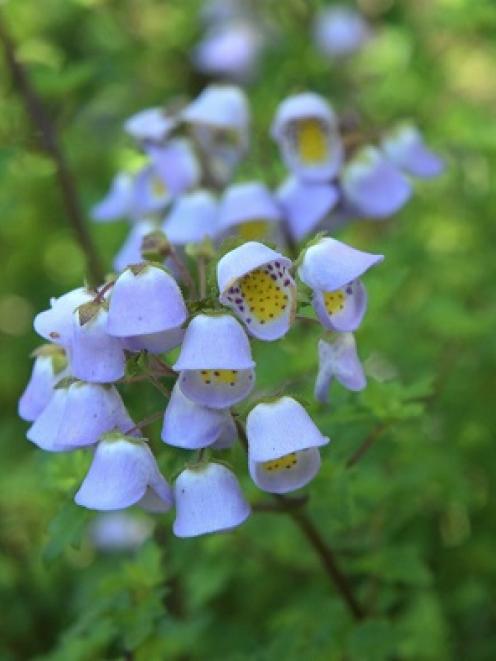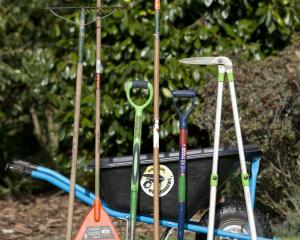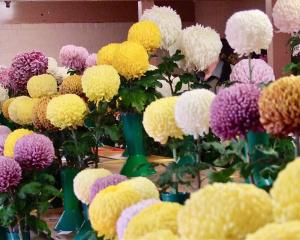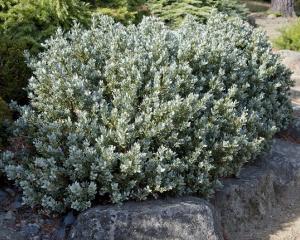
Jovellana are typically semi-evergreen perennial plants with a mounding or creeping habit. A striking feature of this genus are the charming flowers, patterned with distinctive bright spots, a trait shared with its closely related South American genus Calceolaria.
Jovellana violacea, from South America, bears mint-shaped leaves atop reddish stems.
Its bell-shaped flowers are light purple in colour, with eye-catching purple spots dusted over a yellow interior. This mound-forming shrub displays masses of these dainty finger-nail sized flowers from spring through to summer.
The second South American species, Jovellana punctata, bears similar purple speckled flowers, though showing subtle differences in colour and size.
Our native species of Jovellana are just as charming. Jovellana sinclairii is a subshrub – herbaceous with soft woody lower stems, Jovellana repens grows into a low mat up to 2m wide. Both bear the distinctive speckled flowers.
Jovellana is thought to have evolved in South America and to have made it to New Zealand relatively recently.
Grow Jovellana in a sheltered, semi-shaded area where they can be protected from harsh afternoon sunlight. Being cool-climate species, Jovellana may not thrive in warmer climates. Whether growing the South American or New Zealand species of Jovellana, these plants with their delightful flowers will brighten up any garden.
Jovellana are flowering now in the South American borders and the New Zealand plant collection.
Garden Life is produced by Dunedin Botanic Garden. For further information contact Kyla Mathewson









